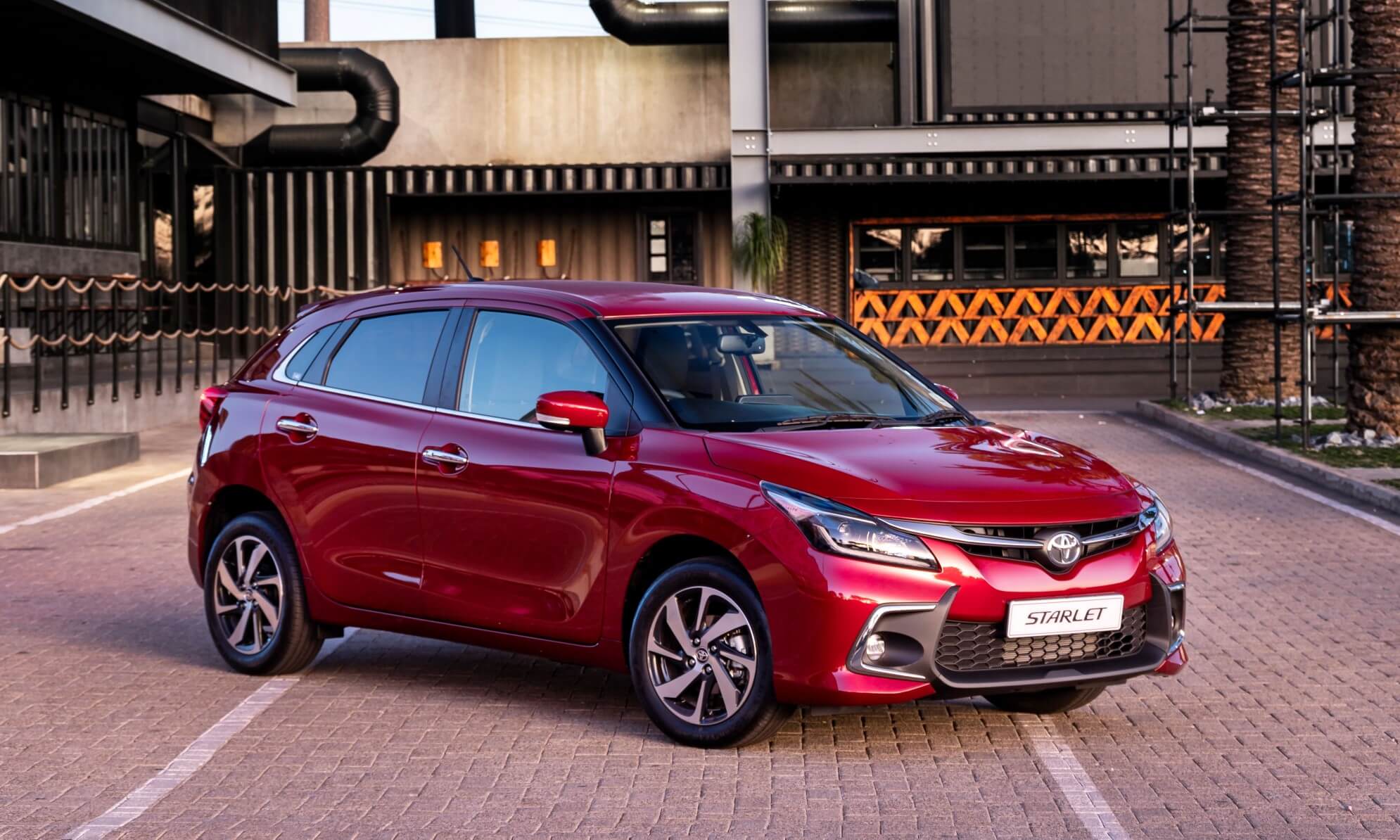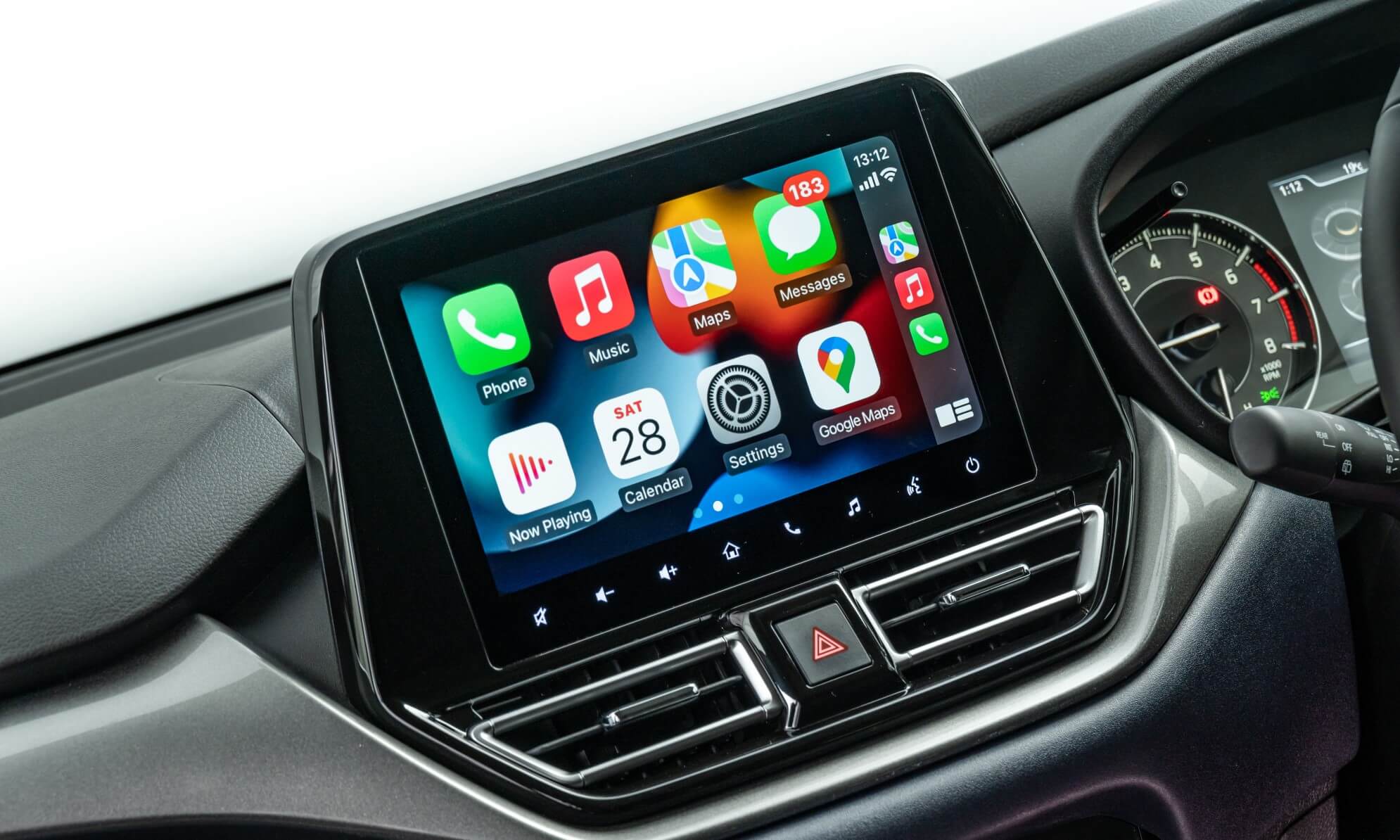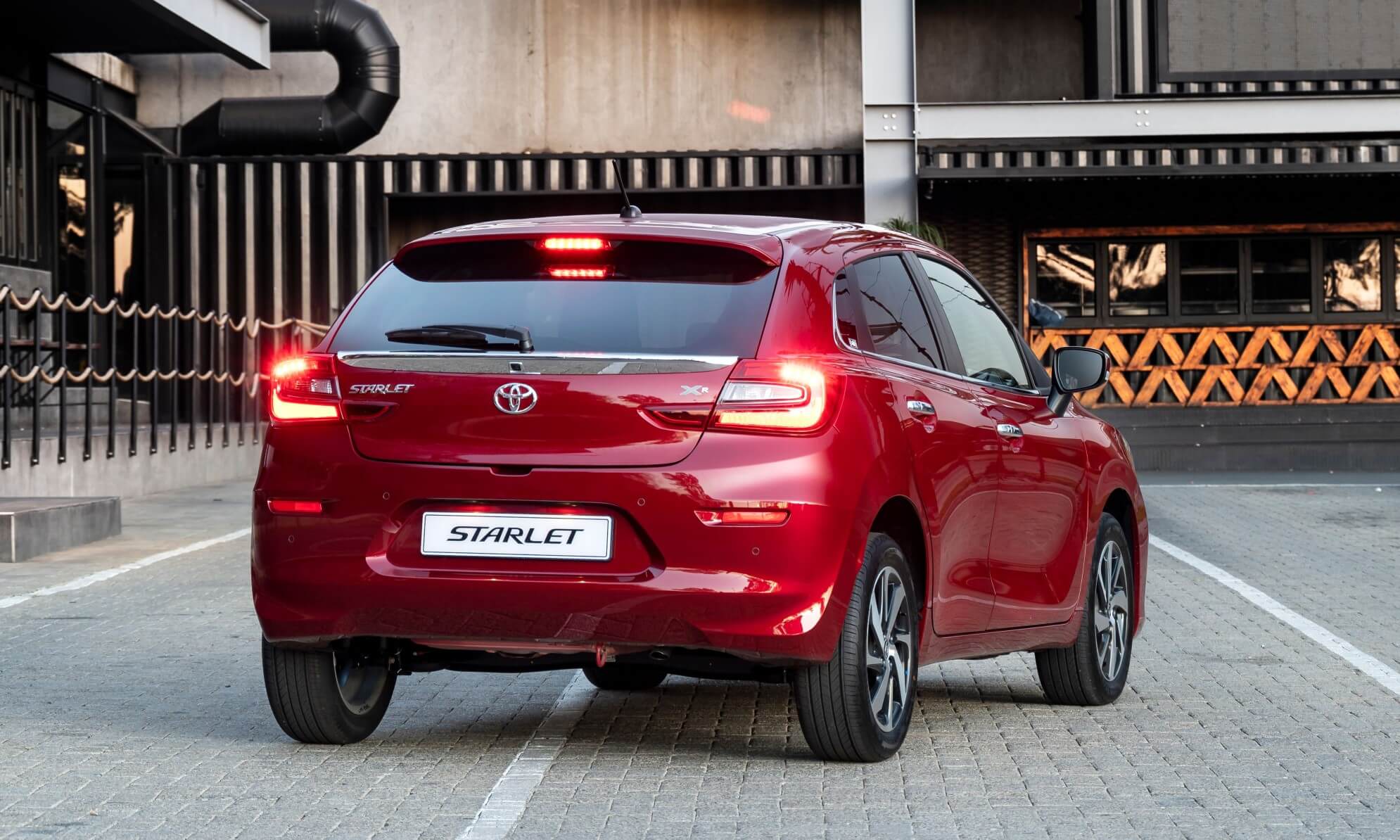About two years ago Toyota South Africa Motors (TSAM) took the decision to introduce the Starlet to our market. This new nameplate was brought in as a replacement for the Etios range (we covered the newcomer at this link). Toyota SA has just introduced a refreshed Toyota Starlet into the SA listings. We were invited to learn about the revised model and to get a brief first-hand taste in and around the city of Cape Town.
Follow Double Apex on Facebook and Instagram, where we share more car content.
New face and tail
The refreshed Toyota Starlet will be quite noticeable to onlookers. It features revised styling front and rear. The headlamps, bumper and grille are completely new on the latest Starlet. Most notable of the new items are the headlamps, which are flatter and wider.
There’s an equally large change at the rear end. The new taillamps are two-piece items that spill onto the vertical panel of the hatch. They are bolder and more stylish in comparison to the previous items. In addition there is a boot spoiler on the top of the rear window, changing the silhouette ever so slightly.
New inside, too
TSAM has added to the standard features list of the refreshed Toyota Starlet. The new list includes a touchscreen infotainment interface. The system features USB, Bluetooth and Apple CarPlay/Android Auto connectivity. There is also a climate control system, handy for Cape Town on an uncharacteristically warm winter’s day. In addition, rear seat passengers also have their own USB charging port.
Electrically operated windows all round, rear parking sensors, Hill Assist Control (HAC), Vehicle Stability Control and anti-lock brakes with electronic brakeforce distribution are other mod-cons that are now standard fare.
Biggest change of all
All derivatives within the refreshed Starlet range are fitted with a larger 1,5-litre engine. The Starlet shares this unit with the Urban Cruiser SUV. The new engine has an additional 9 kW of power, taking the peak up to 77 kW, max torque increases by a similar figure for a new peak of 138 N.m.
There are three grades: Xi, Xs and Xr along with two transmissions; manual and automatic, which makes for a five variant line-up (see bottom of post for the breakdown). The automatic is a new offering within the Starlet range. This four-speeder joins the five-forward three-pedal version.
Behind the wheel
Toyota planned a compact and easy drive for us around the scenic surrounds of Cape Town. The weather seemed confused as to the time of year dishing up a cloudless 25-degree day. We zipped through mid-morning traffic as we made our way along the Atlantic seaboard, heading for the iconic Chapman’s Peak drive. The manual (our choice) is a doddle to drive with a sprung clutch action and light shift mechanism. During our stop-start drive the Starlet averaged just over six litres per 100 km, pretty handy in these budget conscious times, even with the aircon blowing the whole time.
Summary
It’s fair to say that TSAM has a pretty good handle on what customers in SA require. More importantly, they listen to the market and its demands. Many of the revisions on the refreshed Toyota Starlet range were driven from customer demand. As a result of the new appearance, new transmission and increased standard specification, the company should see an increase over the twelve-odd thousand Starlet units sold in 2021.
Xi MT – R226 200
1,5 Xs MT – R239 100
Xs AT – R261 100
Xr MT – R294 900
Xr AT – R313 300
Prices include a three-services/45 000 km service plan and a three-year/100 000 km warranty.






![[UPDATED] Mazzei Formula Five Is One Man’s Obsession](https://doubleapex.co.za/wp-content/uploads/2024/08/Mazzei-Formula-Five-500x383.jpg)

![Ferrari Amalfi Introduced as Roma’s Replacement [w/video]](https://doubleapex.co.za/wp-content/uploads/2025/07/Ferrari-Amalfi-500x383.webp)
Leave A Comment